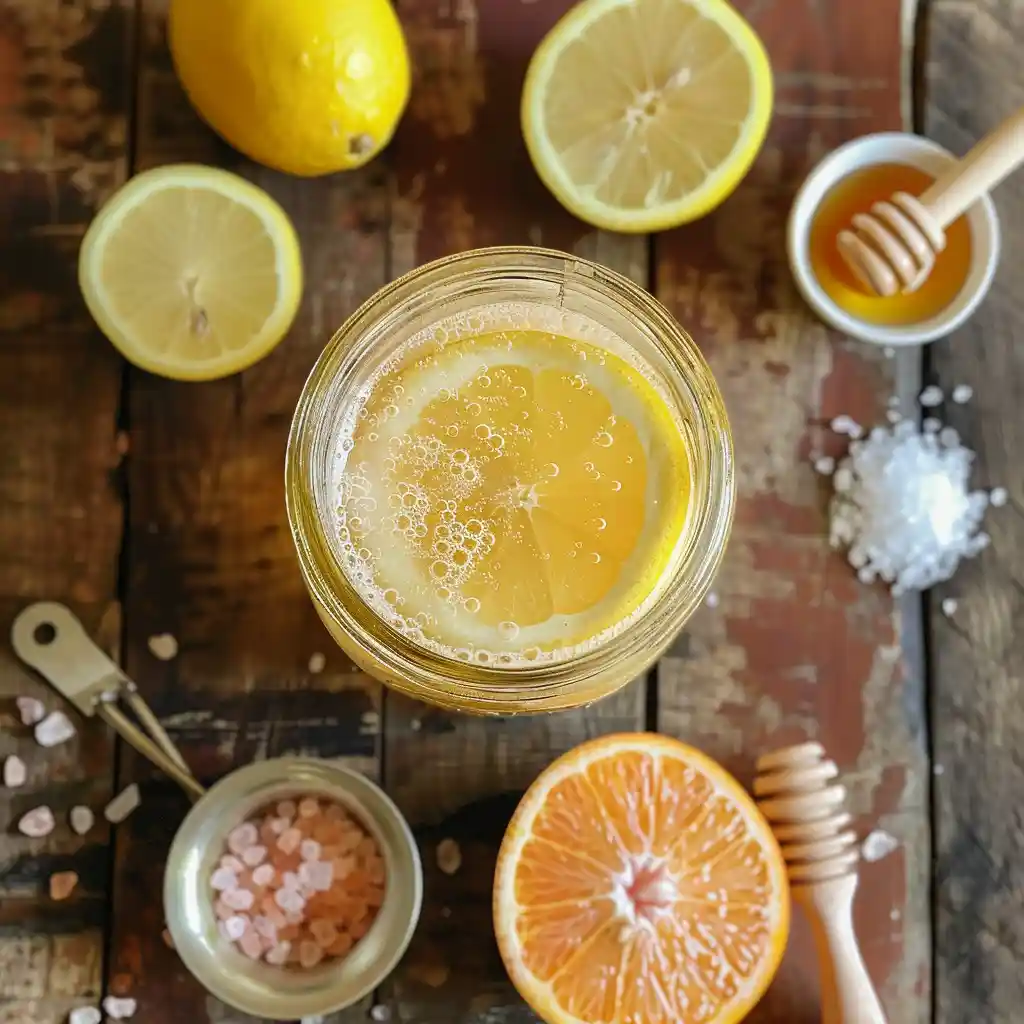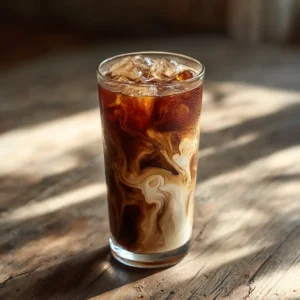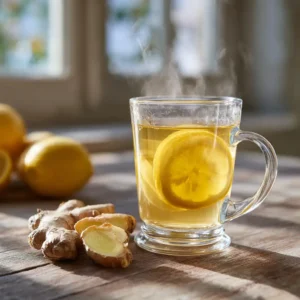Last summer, while hiking through Arizona’s red rock trails, I hit a wall. Not the kind you can see, but the kind where your legs give out, your mouth goes dry, and your head spins. I had forgotten my store-bought sports drink and only had water. That moment, crouched in the shade with salt crusting my face, is when I realized—maybe it’s time I make my own hydration drink. Something simple. Something natural. That’s how my journey into creating the perfect homemade Gatorade recipe began.
In this article, I’ll share everything I’ve learned about crafting a DIY electrolyte drink that supports hydration without all the additives found in commercial sports drinks. This guide is for:
- Athletes and gym-goers wanting a cleaner way to hydrate
- Parents looking for kid-safe alternatives to sugary beverages
- Anyone recovering from heat, flu, or fatigue
- Folks just curious about how to make Gatorade at home
You’ll learn:
- The key ingredients that make Gatorade work—and how to recreate them naturally
- Step-by-step methods for building your own electrolyte blends
- Flavor combinations and pro tips for performance or recovery
- How to tweak recipes for sugar-free, paleo, or vegan needs
We’ll also answer popular questions like “What’s a natural replacement for Gatorade?” and “How do you make your own electrolyte drink at home?” Whether you’re prepping for a run or just want to feel refreshed on a hot day, this guide will give you the knowledge to hydrate smarter, not just sweeter.
Looking for inspiration? Try our natural Gatorade recipe for a quick start.
Let’s get into the benefits of making your own Gatorade—and why so many are switching to homemade.
Why Make Your Own Gatorade?
Real Reasons People Love a Homemade Gatorade Recipe
Let’s face it—store-bought Gatorade is convenient, but it comes with loads of sugar, artificial dyes, and ingredients most people can’t even pronounce. That’s why more families, athletes, and health-conscious folks are turning to a homemade Gatorade recipe. When you make it yourself, you get complete control over what goes into your body.
You can adjust everything:
- Sugar levels
- Salt type
- Fruit juices or natural flavor
- Even the color (no neon yellow needed!)
Not only is it healthier, but it’s also surprisingly simple and affordable. You probably have everything you need right now in your kitchen—citrus, salt, water, and a sweetener.
Pro Tip: Use real sea salt or pink Himalayan salt to boost trace minerals and improve flavor. It’s more natural than processed table salt.
Save Money, Skip Additives
A bottle of Gatorade might cost $2 or more. But with a few pantry basics, you can make multiple servings of a refreshing homemade Gatorade recipe for pennies. Plus, you’ll avoid ingredients like high fructose corn syrup and fake flavorings that are common in commercial drinks.
Don’t miss our fermented probiotic lemonade guide to pair hydration with gut health.
Tailored to Your Body’s Needs
One of the biggest perks of a homemade Gatorade recipe is flexibility. You can increase the sodium for post-workout recovery, add potassium-rich coconut water, or skip the sugar entirely for a keto-friendly version.
Check out our adrenal cocktail recipe for an energizing alternative packed with whole-food electrolytes.
Clean Hydration with Real Ingredients
If you’re tired of hard-to-read labels and synthetic flavors, switching to a homemade Gatorade recipe is a game changer. You’ll stay hydrated with ingredients you recognize—and nothing more.
Pro Tip: Mix up a pitcher ahead of time and keep it in the fridge. It’s perfect for family sports days, gym workouts, or recovery from illness.
Discover great ideas like our kombucha recipe for naturally fizzy, hydrating options.
Reduce Waste and Stay Eco-Friendly
By ditching the plastic bottles and making your own drinks at home, you’re not just doing your body good—you’re helping the planet too. It’s one more reason why a homemade Gatorade recipe makes perfect sense for modern living.
Print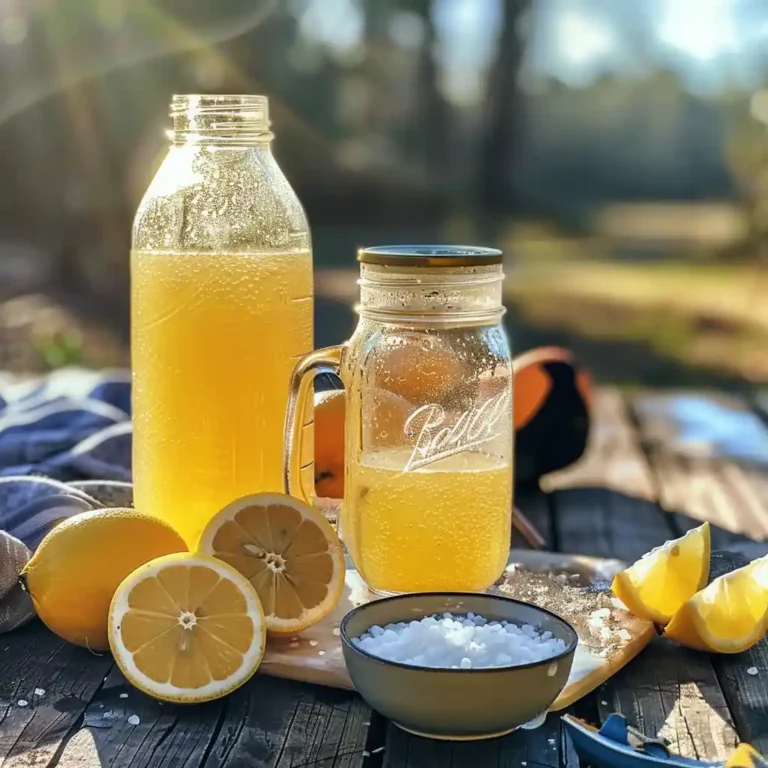
Homemade Gatorade Recipe
A natural, affordable, and customizable electrolyte drink that supports hydration for athletes, families, and anyone in need of a boost.
- Total Time: 5 minutes
- Yield: 2 servings 1x
Ingredients
- 2 cups filtered water
- 1/4 tsp sea salt or pink Himalayan salt
- 2 tbsp lemon juice
- 1 tbsp raw honey or maple syrup
- Optional: 1/4 cup orange juice
Instructions
- Warm water slightly to help dissolve ingredients faster.
- Add sea salt, lemon juice, and honey or maple syrup to the water.
- Optional: Add orange juice for extra potassium and flavor.
- Stir until fully dissolved.
- Chill in the fridge or pour over ice to serve.
Notes
For sugar-free options, substitute honey/maple syrup with a few drops of stevia. Store in the fridge for up to 4 days. Shake before drinking. Customize with coconut water, herbal tea, or fresh herbs like mint for extra benefits.
- Prep Time: 5 minutes
- Cook Time: 0 minutes
- Category: Drinks
- Method: No Cook
- Cuisine: American
Nutrition
- Serving Size: 1 cup
- Calories: 45
- Sugar: 8g
- Sodium: 300mg
- Fat: 0g
- Saturated Fat: 0g
- Unsaturated Fat: 0g
- Trans Fat: 0g
- Carbohydrates: 11g
- Fiber: 0g
- Protein: 0g
- Cholesterol: 0mg
Essential Electrolytes in a Homemade Gatorade Recipe
What Makes Gatorade Actually Work?
The magic of Gatorade isn’t in the bright colors—it’s in the electrolytes. These are minerals that help your body stay balanced and hydrated, especially when you’re sweating or sick. A well-crafted homemade Gatorade recipe mimics this balance using natural sources.
Here are the key electrolytes you need:
- Sodium: Helps retain water and prevent dehydration.
- Potassium: Supports heart and muscle function.
- Magnesium: Reduces muscle cramps and boosts recovery.
- Chloride: Aids digestion and fluid regulation.
Pro Tip: Add a pinch of magnesium powder or a splash of coconut water to elevate your homemade sports drink naturally.
Where to Get These Electrolytes Naturally
You don’t need fancy powders. A solid homemade Gatorade recipe often includes citrus juice (rich in potassium), natural sea salt (for sodium), and even maple syrup or honey (for glucose).
| Electrolyte | Natural Source | Purpose |
|---|---|---|
| Sodium | Sea salt, pink salt | Fluid balance & hydration |
| Potassium | Orange juice, coconut water | Muscle support |
| Magnesium | Magnesium citrate, leafy greens | Muscle recovery & energy |
| Chloride | Table salt, celery juice | Digestive function |
Looking for inspiration? Try our natural Gatorade recipe for a full nutrient-packed option.
The Sweetener Question: To Add or Not?
Traditional Gatorade contains lots of sugar. Your homemade Gatorade recipe doesn’t have to. You can use:
- Raw honey
- Organic maple syrup
- Fruit juices
- Or skip sweeteners entirely
If you’re low on energy during workouts, a touch of sugar helps with quick absorption. But for casual hydration? You might want to go light or sugar-free.
Check out our homemade soda guide if you’re looking to make fizzy but low-sugar drinks at home.
Pro Tip: For sugar-free hydration, use a drop of stevia and lemon juice to cut the tang without extra carbs.
Balancing Flavor and Function
Taste matters—no one wants to chug something bland. A good homemade Gatorade recipe blends function and flavor. Lemon and orange give it a zesty kick, while salt enhances natural sweetness and helps absorption.
Don’t miss our Celtic salt trick ingredients to understand the best salts for health and hydration.
Pro Tip: Use half lemon and half orange juice to balance acidity with sweetness. It’s refreshing and energizing!
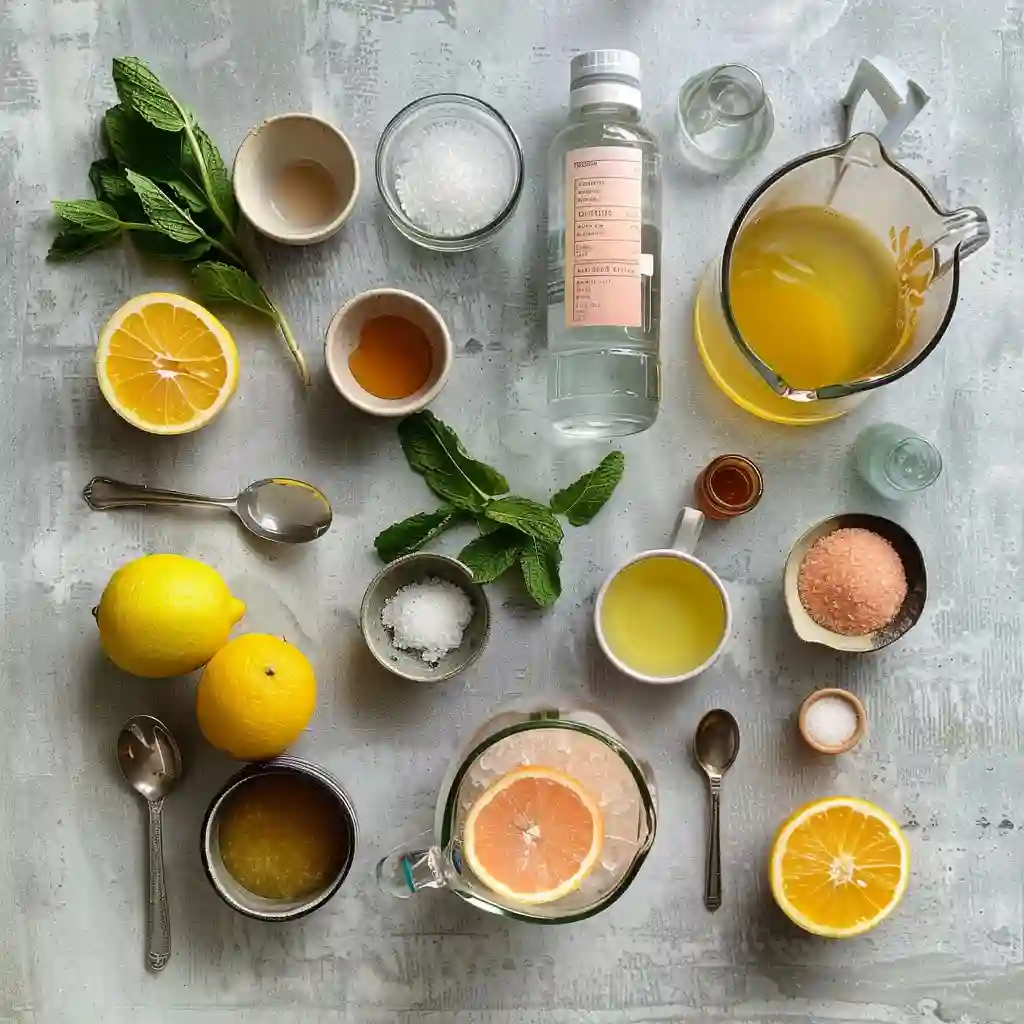
Step-by-Step: How to Make a Homemade Gatorade Recipe
The Basic Formula
Creating your own homemade Gatorade recipe is surprisingly easy. The key is balancing fluid, salt, and a bit of sugar. Here’s a simple base recipe to start with:
Basic DIY Gatorade Formula
- 2 cups filtered water
- 1/4 tsp sea salt or Himalayan salt
- 2 tbsp lemon juice
- 1 tbsp honey or maple syrup
- Optional: 1/4 cup orange juice for extra potassium
Stir everything until dissolved. Taste and adjust the sweetness or tartness as needed. This simple mix supports hydration, especially after physical activity or exposure to heat.
Pro Tip: Use warm water to help the honey dissolve more quickly, then chill it for a refreshing finish.
Flavor Variations for Every Mood
Once you master the base, get creative! A custom homemade Gatorade recipe lets you switch up flavors to match your cravings or energy needs. Some delicious combinations include:
- Citrus Mint: lemon, lime, and crushed mint leaves
- Tart Cherry: unsweetened cherry juice and sea salt
- Pineapple Coconut: pineapple juice and coconut water
- Spicy Lemon: lemon juice, cayenne pepper, and raw honey
If you’re active outdoors or training in the heat, tart cherry juice can help with inflammation and muscle recovery. Just be sure to watch sugar content from fruit juices.
Check out our kombucha recipe if you’re looking to mix probiotics with hydration for post-workout gut support.
How to Store Your Homemade Drink
Make your homemade Gatorade recipe in batches to save time. Store it in a glass bottle or mason jar in the fridge for up to 4 days. Shake before drinking since natural ingredients tend to separate.
Don’t miss our fermented lemonade guide for a tangy, gut-friendly drink option that lasts even longer.
Pro Tip: Freeze your drink in ice cube trays. Pop them into your water bottle for on-the-go flavor and electrolyte boost.
Adjusting for Dietary Needs
If you’re keto, paleo, vegan, or avoiding sugars, you can still enjoy a homemade Gatorade recipe. Use:
- Stevia or monk fruit for low-carb sweetness
- Coconut water for a vegan electrolyte base
- Maple syrup instead of honey for plant-based hydration
Looking for inspiration? Try our adrenal cocktail recipe for a mineral-rich, naturally energizing blend.

When and Why to Use a Homemade Gatorade Recipe
Ideal Moments for Natural Hydration
Whether you’re finishing a long run or recovering from the flu, timing your hydration is key. A homemade Gatorade recipe is especially helpful during or after:
- Intense workouts
- Hot weather exposure
- Illness involving vomiting or diarrhea
- Fasting or low-carb diets
In these moments, your body loses both fluids and minerals. A quick, natural rehydration drink can make all the difference in how fast you bounce back.
Pro Tip: Drink small sips every 15 minutes during intense activity instead of gulping down large amounts all at once.
Homemade vs Store-Bought: The Performance Debate
Can a homemade Gatorade recipe perform as well as commercial brands? In many cases—yes. Especially if your homemade mix includes fast-absorbing sugars and proper salt ratios. Plus, it avoids:
- Preservatives
- Artificial dyes
- Lab-formulated sweeteners
And unlike store-bought options, homemade blends allow you to fine-tune the electrolyte levels based on your personal needs.
Don’t miss our natural Gatorade recipe that’s built for real results using real ingredients.
Who Benefits Most From DIY Hydration?
While almost anyone can enjoy a refreshing glass of a homemade Gatorade recipe, it’s particularly useful for:
- Athletes and fitness enthusiasts
- Children during hot summer play
- Seniors needing gentle hydration support
- People on elimination diets
Each group can benefit from the ability to customize sugar levels, flavor intensity, and mineral content.
Check out our homemade soda guide if you’re trying to wean off sugary soft drinks while keeping taste and fizz.
Homemade Electrolyte Drink as a Daily Habit
Even outside of exercise, drinking a mild version of a homemade Gatorade recipe once a day can help with daily hydration. If you wake up groggy, experience frequent headaches, or drink lots of caffeine, your body may be low on minerals.
A daily glass may help support better energy, mental clarity, and muscle function.
Pro Tip: Add a few cucumber slices and basil for a spa-style twist to your daily hydration routine.
Common Mistakes to Avoid in a Homemade Gatorade Recipe
Overloading on Sugar
A frequent misstep in crafting a homemade Gatorade recipe is adding too much sweetener. While a bit of sugar can aid quick absorption during workouts, too much turns your drink into a sugar bomb. Stick to 1–2 tablespoons of natural sweetener per 2–3 cups of liquid for balance.
Pro Tip: If your drink tastes too sweet, dilute it with water or add more citrus juice to restore flavor balance.
Ignoring Sodium Ratios
Salt is a critical part of any homemade Gatorade recipe, but more doesn’t always mean better. Too much can make the drink unpleasant or even spike blood pressure. Aim for 1/4 teaspoon of quality sea salt per 16–20 ounces of liquid.
If you’re unsure, start small and increase gradually based on taste and sweat loss.
Don’t miss our Celtic salt trick ingredients to better understand natural salt options for DIY electrolyte drinks.
Skipping Key Electrolytes
While sodium is essential, your homemade mix should also include potassium and magnesium. Citrus juice, coconut water, and a touch of magnesium citrate powder can turn a basic blend into a full-spectrum electrolyte drink.
A complete homemade Gatorade recipe works best when it mimics the body’s natural mineral needs.
Check out our adrenal cocktail recipe for a blend designed with electrolyte balance in mind.
Poor Storage Habits
A fresh homemade Gatorade recipe is free of preservatives, which means it won’t last forever. Store it in a sealed glass jar in the fridge and use it within 3–4 days. Always shake before drinking, especially if using real juices or powdered minerals.
Pro Tip: Label your homemade bottles with the date so you never forget how fresh they are.
Forgetting to Taste as You Go
Everyone’s taste buds and hydration needs are different. Always test your drink before committing to a batch. Need more tartness? Add lemon. Too salty? Dilute with water. The beauty of a homemade Gatorade recipe is how easy it is to personalize.
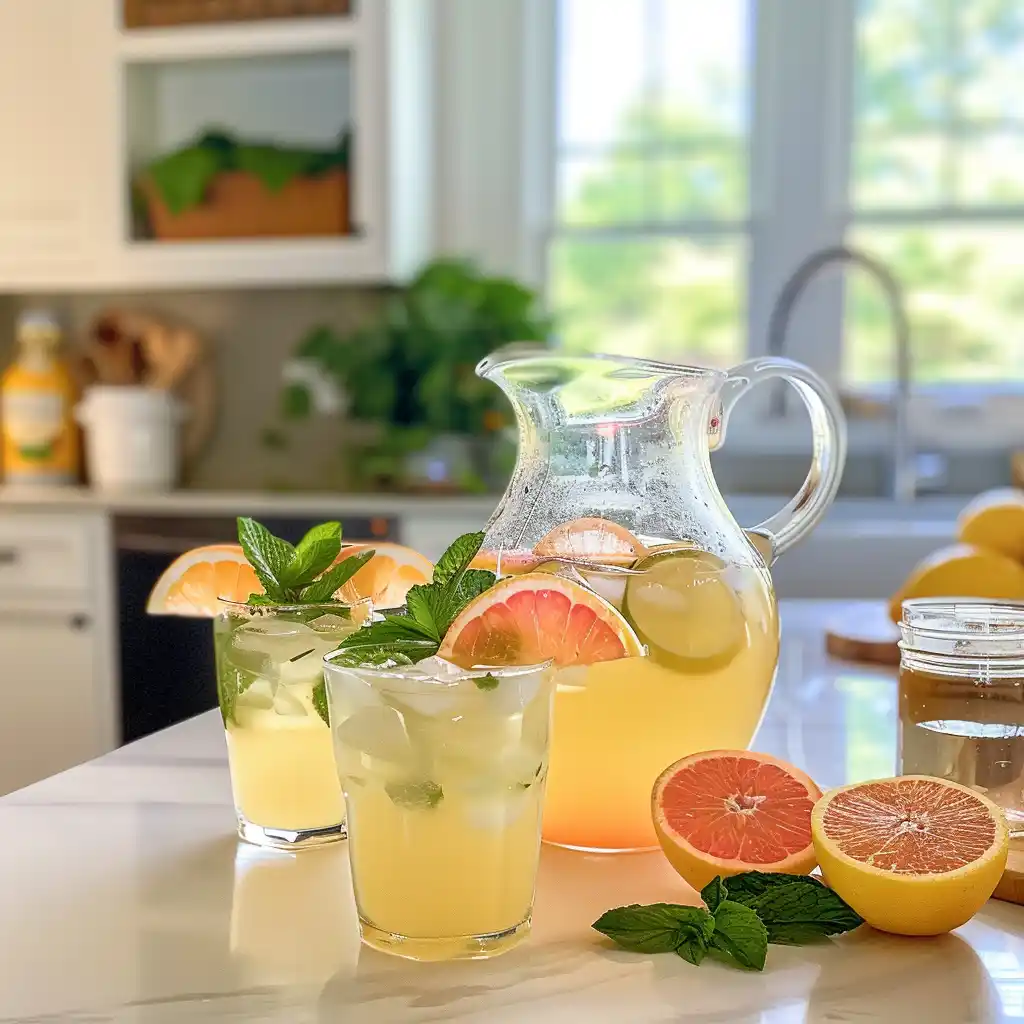
Ingredient Spotlight – What to Use in a Homemade Gatorade Recipe
Best Salt for Electrolyte Balance
Not all salts are created equal. For a truly effective homemade Gatorade recipe, reach for unrefined options like pink Himalayan salt, sea salt, or Celtic salt. These salts are minimally processed and often contain trace minerals that help support hydration more naturally than regular table salt.
Pro Tip: Start with just 1/4 teaspoon of salt per 2 cups of liquid, and adjust based on your activity level and taste preferences.
Citrus Juices for Flavor and Potassium
Citrus fruits are the backbone of many homemade electrolyte drinks. Lemon and orange juices not only enhance flavor but also provide potassium, which supports muscle function. A great homemade Gatorade recipe usually blends both lemon and orange to create a zesty, energizing drink.
You can also try lime or grapefruit for a more unique flavor profile.
Looking for inspiration? Try our natural Gatorade recipe for a well-balanced citrus blend.
Sweeteners: Natural or None?
While traditional Gatorade uses glucose syrup, your homemade Gatorade recipe can use cleaner alternatives:
- Honey: naturally antibacterial and adds subtle sweetness
- Maple syrup: vegan and mineral-rich
- Stevia: for sugar-free hydration
Choose based on dietary needs, but remember—moderation is key.
Check out our fermented lemonade guide if you want a drink that supports both hydration and digestion.
Coconut Water and Herbal Additions
Coconut water is nature’s electrolyte drink—packed with potassium and slightly sweet on its own. Add 1/2 cup to your homemade Gatorade recipe for a boost without added sugars. Herbs like mint or basil can also add refreshing notes and antioxidant properties.
Pro Tip: Brew herbal tea (like hibiscus or chamomile) and use it as the base for a naturally flavored, caffeine-free electrolyte drink.
My Personal Experience with Homemade Gatorade Recipe Testing
From First Sip to Final Formula
When I first tried making a homemade Gatorade recipe, I overdid the lemon juice and forgot the salt. The result? Tart water that didn’t help me recover after a workout. But I kept going—adjusting flavors, tweaking the salt levels, experimenting with different sweeteners.
After a few tries, I found my go-to mix: fresh lemon juice, a splash of orange, raw honey, and pink Himalayan salt. It wasn’t just refreshing—it felt like fuel. I drank it after morning walks, during home workouts, and even when I had the flu. Each time, I noticed I bounced back faster and felt less fatigued.
Pro Tip: Document your favorite ratios in a notebook so you can repeat them without second-guessing. Tweak based on season, mood, or energy needs.
Sharing the Recipe with Family and Friends
I introduced the recipe to my cousin, who’s a high school soccer player. She loved it. My mom, skeptical at first, now keeps a small jar in the fridge for hot afternoons. Even my neighbor, who avoids sugary drinks, appreciated how customizable it was.
What makes a homemade Gatorade recipe work for everyone is the simplicity. Once people realize they can mix water, salt, and fruit juice to make something clean and hydrating, they rarely go back to the bottled stuff.
Don’t miss our adrenal cocktail recipe for another easy, nutrient-rich drink that works just as well when you need a pick-me-up.
When It Made a Real Difference
Last winter, I came down with a nasty cold. I couldn’t eat much, and staying hydrated felt like a job. My usual teas weren’t cutting it. That’s when I reached for my tried-and-true homemade Gatorade recipe. It gave me enough electrolytes and flavor to keep sipping—and helped me feel better, sip by sip.
Check out our kombucha recipe if you’re curious about fermented drinks that support both hydration and gut health.
Why I’ll Never Go Back
Once you’ve made a homemade Gatorade recipe tailored to your taste and needs, it’s hard to justify the cost and chemicals of store-bought options. It’s cheaper, healthier, and can be as creative or simple as you want it to be.
Pro Tip: Freeze your mix in popsicle molds during summer. It’s a kid-friendly way to stay hydrated without added dyes or sugars.
Customizing Your Homemade Gatorade Recipe for Special Diets
Keto-Friendly Hydration
If you’re following a low-carb or ketogenic diet, hydration becomes even more important. Traditional sports drinks are loaded with sugar, which spikes insulin and kicks you out of ketosis. That’s where a homemade Gatorade recipe truly shines. You can skip the sugar and use alternatives like stevia or monk fruit while still getting vital minerals.
Pro Tip: Add a splash of apple cider vinegar for extra electrolytes and a metabolic kick—it pairs surprisingly well with lemon juice and salt.
Vegan and Plant-Based Versions
Most homemade Gatorade recipe versions are already plant-based. But if you want to avoid honey, maple syrup is a perfect substitute. Coconut water is another vegan-friendly ingredient packed with potassium and a naturally sweet flavor. Combine it with citrus and sea salt for a totally vegan hydration drink.
Looking for inspiration? Try our natural Gatorade recipe that uses only whole, plant-based ingredients.
Paleo and Whole30 Variants
For Paleo or Whole30 folks, stick to whole-food sweeteners like raw honey or skip sweeteners altogether. Herbal teas like rooibos or peppermint can be used as a base to add flavor without compromising your diet.
Check out our homemade soda guide for fizzy alternatives that still fit your clean-eating lifestyle.
Allergy Considerations
If you or your family has allergies to citrus, don’t worry—you can still make a great homemade Gatorade recipe. Try using watermelon juice, cucumber water, or herbal infusions as a refreshing, hypoallergenic base. Just be sure to keep the salt-to-liquid ratio balanced for effectiveness.
Pro Tip: Test small batches when trying a new variation, especially for kids or those with food sensitivities.
Making It Kid-Friendly
Most kids love bright, fun drinks—but they don’t need the sugar crash. A homemade Gatorade recipe gives you control over flavor and color without artificial dyes. Use beet juice for pink, blueberry for purple, and lemon for yellow. It turns hydration into a fun, healthy habit.
Don’t miss our Celtic salt trick ingredients to understand the mineral benefits of natural salts for kids and adults alike.
FAQs Answered About Homemade Gatorade Recipe
How to make your own Gatorade?
To make your own Gatorade, start with a simple homemade Gatorade recipe: mix 2 cups of water, 2 tablespoons lemon or orange juice, 1 tablespoon honey or maple syrup, and 1/4 teaspoon sea salt. Stir until fully dissolved. This basic combo gives you hydration, electrolytes, and natural energy without preservatives or food dyes.
Pro Tip: Make a big batch and refrigerate it in a mason jar so it’s always ready post-workout or after time in the sun.
How do you make your own electrolyte drink?
A quality homemade Gatorade recipe includes the key electrolytes your body needs: sodium (from salt), potassium (from citrus or coconut water), and sometimes magnesium. You can enhance it with herbal teas, natural sweeteners, and real fruit juices to suit your taste and nutritional needs.
Check out our fermented lemonade guide if you want an electrolyte drink that also supports gut health.
What is a natural replacement for Gatorade?
A natural replacement for Gatorade is any drink that replenishes fluids and electrolytes without artificial additives. Think coconut water, diluted fruit juice with sea salt, or a homemade electrolyte tea. A homemade Gatorade recipe lets you combine these elements into a drink that works for your body, your diet, and your schedule.
What are the 5 ingredients in Gatorade?
Typical Gatorade includes water, sugar, salt, potassium, and flavoring (often artificial). A cleaner homemade Gatorade recipe uses:
Filtered water
Natural sweetener (honey or maple syrup)
Sea salt or Himalayan salt
Citrus juice (like lemon or orange)
Optional add-ins: coconut water, magnesium powder, or herbs
Don’t miss our adrenal cocktail recipe for a mineral-packed, naturally sweetened drink alternative.
Is homemade Gatorade safe for kids?
Yes—when made with natural ingredients and low sugar, a homemade Gatorade recipe can be a smart hydration solution for active kids. Skip artificial flavors and use fun, natural colors like beet juice or blueberry to make it appealing and healthy.
Pro Tip: Test small servings with your kids first to find their favorite flavor combo. A fun straw or bottle also helps them stay excited to hydrate!
Conclusion: Why a Homemade Gatorade Recipe Belongs in Your Kitchen
After experimenting with flavors, testing different salts, and fine-tuning the balance of sweet and salty, I’ve realized that a homemade Gatorade recipe is more than just a substitute—it’s an upgrade. You’re not just saving money or ditching dyes; you’re choosing a drink that respects your body.
Whether you’re a runner, a busy parent, someone recovering from illness, or simply trying to stay more hydrated day-to-day, this natural approach is easy to prepare and endlessly customizable. With simple ingredients—water, citrus, salt, and a little sweetness—you can create something that truly supports how you feel.
Pro Tip: Keep a “hydration station” in your fridge with prepped citrus slices, herbs, and a small jar of mineral salt to make mixing up your drink quick and convenient.
Hydration shouldn’t come from a bottle with ingredients you can’t pronounce. It should come from your own kitchen—with care, intention, and flavor. Once you start using a homemade Gatorade recipe, it becomes part of your rhythm. And the best part? You’ll never have to wonder what’s in your drink again.
Looking for inspiration? Try our natural Gatorade recipe and follow us for more hydration-friendly creations.
Stay refreshed, stay nourished—and if you’re looking for more ways to enjoy real food and natural wellness, follow us on Facebook and Pinterest.
Disclaimer: This recipe is shared for informational purposes and is not a substitute for medical advice.
